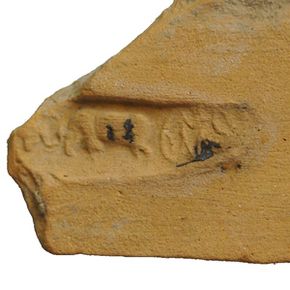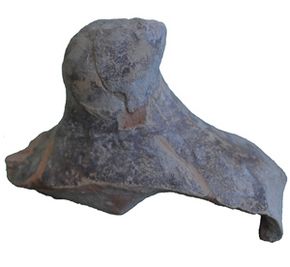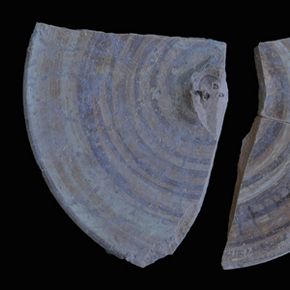 Seal impressed fragment, likely belonging to an Harappan ledge shouldered jar, the impression showing two confronting bulls and some Harappan script (l 3.6 cm, w. 5.5 cm, th. 0.7 cm)
Seal impressed fragment, likely belonging to an Harappan ledge shouldered jar, the impression showing two confronting bulls and some Harappan script (l 3.6 cm, w. 5.5 cm, th. 0.7 cm) Fragment, from Salut, can be identified as a hollow clay “toy” in the shape of a bird: this kind of artifact is well known from Harappan sites (l. 8.5 cm, w. 7 cm, h. 5.5 cm)
Fragment, from Salut, can be identified as a hollow clay “toy” in the shape of a bird: this kind of artifact is well known from Harappan sites (l. 8.5 cm, w. 7 cm, h. 5.5 cm) Two fragments likely belong to the same round clay lid; it is the only one found so far, and finds very little parallel on other southeast Arabia sites (diam. 18.5 cm, th. 0.7 cm)
Two fragments likely belong to the same round clay lid; it is the only one found so far, and finds very little parallel on other southeast Arabia sites (diam. 18.5 cm, th. 0.7 cm)
This newly found Iron Age seal comes from an area to the north of the Salut hill whose investigation just began in November 2015. In all likelihood it has to be identified with part of the Iron Age settlement that was overlooked by "Husn" Salut - found at last!
